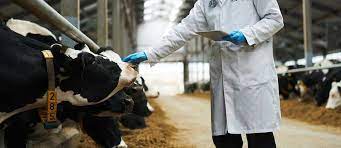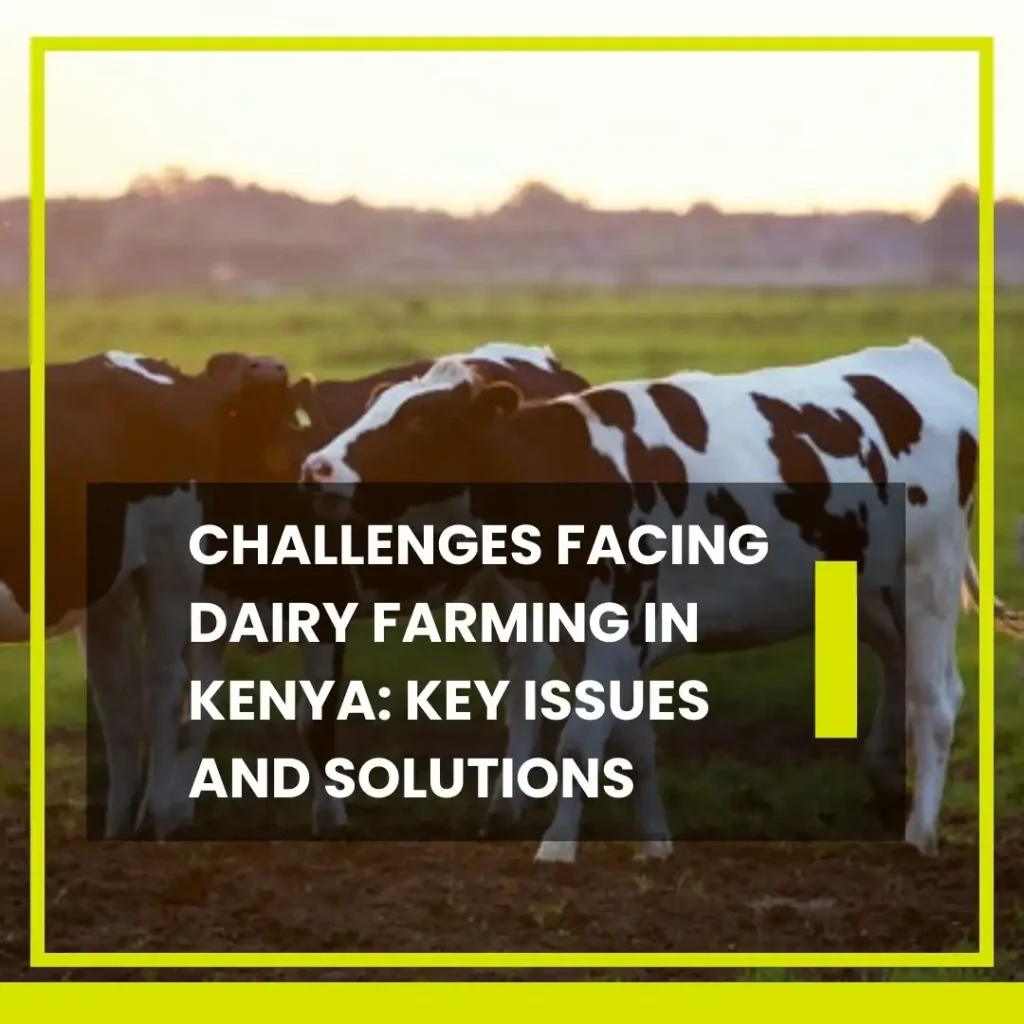- Introduction
- Climate-Related Challenges
- Economic Challenges
- Infrastructure and Technological Challenges
- Animal Health and Management Challenges
- Market-Related Challenges
- Knowledge Skills and Skills Gap
- Policy and Regulatory Challenges
- Environmental Challenges
- Potential Solutions and Way Forward
- Conclusion
- FAQs
- Read Also
Introduction
Dairy farming in Kenya is a vital part of the country’s agriculture. It greatly helps the economy by employing and feeding hundreds of thousands of Kenyans. Kenya stands as one of the leading manufacturers of milk in Africa. Dairy farming is a key source of income for rural families. It is also crucial for ensuring food security in the nation. however, the industry faces several challenges that have crippled its boom and sustainability. The challenges vary. They include bad roads, changing milk prices, poor access to feeds and vets, weather changes, and new laws. Solving these problems is crucial. They ensure lasting prosperity and stability in the industry. In this article, we look at some of the major problems facing the industry hindering its prosperity.
Climate-Related Challenges
Climate-related challenges have proved to be a headache for lots of dairy farmers. Kenya faces many climate challenges. These include droughts and erratic rainfall. They disrupt water and grazing pastures, which are vital for livestock. Climate changes disrupt fodder production, leading to shortages and lower milk yields. Farmers are adopting new techniques to resist these weather changes. These include water harvesting, conservation agriculture, and drought-resistant fodder. Also, better pasture management helps. Adding climate-smart farming does too. Both reduce the harm of climate change. This ensures sustainable dairy farming.
Economic Challenges
Dairy farming in Kenya faces big money problems. Costs for feed, vets, and farm management are rising. These costs stress farmers. Milk prices fluctuate. This creates growth uncertainty and hurts farmers’ earnings. It makes it hard for them to invest confidently. More imported dairy raises competition. It also lowers the demand for local dairy. Also, limited access to funds and banking services limits farmers’ potential. They can’t modernize and improve. Farmers struggle to invest in the critical infrastructure needed to boost productivity. The sector is stifled by a lack of good investment. those elements combined impede profitability and sustainability.
Infrastructure and Technological Challenges
Poor roads and transport networks are major challenges. They prevent timely milk delivery, causing spoilage and lower incomes. The shortage of cold chain centers is also a problem. Milk has to be kept cold to stay fresh. Also, the lack of advanced farming tech is a big problem. It’s especially bad in rural areas. It stops farmers from improving. Unreliable electricity delivery in rural areas makes things complicated. It restricts the use of essential equipment like milking machines and refrigerators. These challenges cumulatively hinder the growth and profitability of the sector.
Animal Health and Management Challenges
Dairy farming in Kenya faces substantial challenges, mainly in animal fitness and control. Mastitis and foot-and-mouth disease are constant dangers to herd health and productivity. Poor access to veterinary services makes it hard. Many farmers cannot get timely medical help for their animals. The breeding programs are not good enough. They could improve the herd’s genetics. This would reduce disease and raise milk yields. Also, feeding animals properly is hard. This is due to inconsistent and expensive feed delivery. These problems cause malnutrition and lower milk yields. These challenges undermine the overall performance and sustainability of dairy farming in Kenya.

Market-Related Challenges
Dairy farming in Kenya faces a wide array of market-related challenges. Small-scale farmers often have limited market access. This is due to bad roads and a lack of markets. Casual milk markets dominate. They account for a huge portion of milk sales. But, they pose a hassle because they offer lower charges and have no quality control. Additionally, there are not enough incentives to add value. They help farmers make better milk that fetches higher prices. They limit farmers’ ability to use updated methods and sell high-fee dairy products. Another challenge is farmers struggle to meet the minimum requirement for dairy products. Most farmers do not follow the set rules. This hurts the growth and profit of Kenya’s dairy region.
Knowledge Skills and Skills Gap
The knowledge and skills gap is a hurdle for successful dairy farming. Farmers are not up to date with modern dairy trends. They can’t adapt or use new methods that could boost productivity. Many Kenyan farmers rely on outdated dairy farming techniques. These methods have become inefficient, reducing profits. Also, generational gaps in farming knowledge are a challenge. Younger generations won’t inherit the needed skills and knowledge from older generations. This gap compromises the general performance and sustainability of dairy farming. Addressing those tough situations needs training and workshops. They will aim to bridge the gap in farming expertise between generations.
Policy and Regulatory Challenges
Dairy farming in Kenya faces many regulatory challenges. They include inconsistent enforcement of dairy farming policies. This inconsistency leads to confusion and inefficiency among farmers. There is not enough guidance for small farmers. They lack the resources, education, and funding needed to improve productivity and sustainability. Also, farmers still fail to follow the proper health and safety standards. This failure still poses a challenge. Farmers try to increase the quantity. However, they may compromise on product quality. This risks consumer health. These common challenges hurt the growth and competitiveness of the dairy business. They make it hard for farmers to thrive and meet the rising demand for dairy goods. Dealing with tough situations requires effort. The effort must come from the government, stakeholders, and farmers. They must ensure compliance with rules. They must provide enough help. And, they must strictly enforce market standards.
Environmental Challenges
Dairy farming in Kenya faces several environmental challenges. Waste management troubles are quite common. Inadequate waste systems cause a buildup of manure and other waste. They pose big health risks to both humans and the herd. Dairy cattle overgrazing degrades the land. It decreases its productivity and causes soil erosion and destruction of vegetation. This harms biodiversity and the venture’s long-term sustainability. Dairy farm waste pollutes local water. It dumps too many nutrients, germs, and chemicals into water sources. These pollutants can damage aquatic ecosystems, have an effect on water high-quality, and pose risks to human fitness. Meeting these challenges requires adopting sustainable practices. These practices help prevent environmental harm.
Potential Solutions and Way Forward
Addressing the environmental challenges in Kenyan dairy farming needs a many-sided approach. Government incentives and support are crucial. They provide the funding, education, and resources needed for sustainable practices. Guidelines that incentivize proper waste control and land conservation should be implemented. Cooperatives and farmer cooperation are vital. They foster collaboration among farmers and provide shared resources and markets. Using advanced tech creates opportunities. It lets us use biogas structures for waste management and precision farming these help optimize resource use. The use of modern irrigation strategies helps reduce water pollution. Emphasizing sustainable farming practices is vital. We should encourage farmers to specialize. They should focus on rotational grazing, organic farming, and agroforestry. This will help keep soil and biodiversity. These efforts combined can promote the overall sustainability and resilience of the sector.
Conclusion
The challenges facing dairy farming in Kenya require urgency and joint efforts from all stakeholders. Each challenge requires proper systems. They also need sustainable practices. These will stop waste, land degradation, and soil pollution. These challenges also offer an opportunity for continued innovation to ensure prosperity. The government offers incentives and regulations. They also collaborate with cooperatives and farmer organizations. These all provide ways to address these challenges. Adopting new tech and keeping up with modern trends helps make dairy farming sustainable. The dairy sector in Kenya can aim for resilience, efficiency, and environmental stewardship. This will ensure a prosperous industry for farmers and the broader community.

